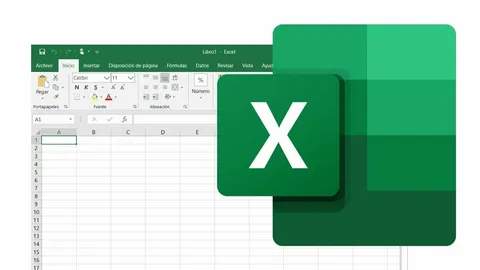In today’s rapidly evolving business environment, technology plays a crucial role in driving growth, innovation, and efficiency. However, many organizations are still heavily reliant on legacy systems—outdated software or hardware that continues to run critical business operations but is no longer supported by vendors.
As these systems age, they create significant challenges that can hinder a company’s ability to adapt to market demands, integrate modern technologies, and scale effectively.
If your business depends on legacy systems, you may already be feeling the strain. Here’s a look at the specific problems these systems can cause and what steps your organization can take to modernize.
The Problems Legacy Systems Cause
- Lack of Vendor Support
One of the most significant challenges with legacy systems is that they are no longer supported by the original vendors. This means no security patches, bug fixes, or software updates, leaving your systems vulnerable to cyberattacks, security breaches, and compliance issues. Additionally, if something goes wrong, there is often no one to provide technical assistance, which can result in extended downtimes and costly fixes.
- High Maintenance Costs
Legacy systems typically require ongoing maintenance to keep them running. These costs add up quickly, especially when it involves hiring specialists familiar with outdated technology. The older the system, the harder it is to find parts, developers, or resources to maintain it.
- Incompatibility with Modern Tools
As technology advances, legacy systems often cannot integrate with modern tools or software solutions, making it difficult to implement new features or optimize processes. For example, they may not support cloud computing, mobile access, or data analytics platforms—technologies that are essential for businesses today. This limits your ability to adopt innovative solutions and stay competitive.
- Inability to Scale
Legacy systems were designed for a different era, and as businesses grow, these systems often struggle to scale. Whether it’s handling larger volumes of data, accommodating new users, or supporting more complex business processes, legacy systems tend to buckle under increased demands.
- Limited Flexibility
Adapting to changing business requirements can be near impossible with legacy systems. Their rigid architecture and outdated codebases mean that any modification requires significant time and effort. This limits your organization’s ability to respond quickly to market changes, customer demands, or new opportunities.
- Data Silos and Poor Integration
Legacy systems often operate in isolation, leading to data silos where critical business information is fragmented across multiple systems. This lack of integration prevents efficient data flow, reduces visibility, and makes it difficult to generate actionable insights, resulting in slower decision-making processes.
The Solution: Modernizing Your Systems
There are two main approaches to overcoming the challenges of legacy systems: building custom software or adopting a commercial off-the-shelf (COTS) solution. Each has its advantages, and the right choice depends on your organization’s unique needs.
Custom Software Development
Building custom software allows you to create a solution tailored specifically to your business processes, goals, and requirements. It offers maximum flexibility and can be designed to integrate seamlessly with other tools or systems. This approach is ideal for businesses with complex workflows or unique needs that cannot be addressed by off-the-shelf solutions.
Advantages of Custom Software:
-
- Fully tailored to your specific business processes
- Ability to scale and evolve with your company
- Integration with existing systems and third-party tools
- Control over updates, security, and features
- Long-term cost savings through reduced reliance on third-party vendors
However, custom development can require more time and investment upfront, and proper planning is essential to ensure success.
Commercial Off-the-Shelf (COTS) Solutions
COTS solutions are pre-built software products designed to meet common business needs. In today’s environment, there are standard software products for almost every function—whether it’s managing customer relationships, handling inventory, or automating payroll. These solutions can often be deployed quickly and at a lower initial cost compared to custom development.
For businesses with standard processes that don’t require a unique way of doing things, COTS solutions can be an attractive and practical option. However, if your processes are highly specific or offer a competitive edge, then custom software may be the better path.
Advantages of COTS Solutions:
-
- Faster deployment and implementation
- Lower upfront costs compared to custom development
- Regular updates and support from the vendor
- Proven reliability with established user bases
- Easily adaptable to businesses with common, non-specialized needs
The downside to COTS is that it may not perfectly align with your processes and could require workarounds or additional customization. For businesses with unique workflows or complex requirements, a custom solution would offer greater flexibility and alignment with their specific needs.
Key Steps for Successful Modernization
Regardless of whether you choose custom software or a COTS solution, successful modernization requires careful planning and execution. Here are the key steps to take:
- Analyze Your Business Needs
Before making any decisions, it’s essential to thoroughly analyze your current systems, business processes, and future goals. What features and capabilities do you need? What are the gaps in your existing system? Identify the specific problems your legacy system is causing so that you can choose the right solution. - Evaluate Your Options
Once you’ve identified your needs, evaluate the options available. For some businesses, custom software may be the best route, while others may find a COTS solution more practical. Consider factors like scalability, integration capabilities, cost, and how well the solution fits your business. - Select the Right Vendor or Software Solution
Choosing the right vendor or software provider is a critical step. If you opt for a COTS solution, ensure that the vendor has a strong track record, provides adequate support, and offers the features your business needs. If you choose custom development, find a trusted development partner with experience in building solutions tailored to your industry. Assess their expertise, communication, and ability to meet deadlines. - Plan the Migration
Create a roadmap for transitioning from legacy systems to the new platform, ensuring minimal disruption to your daily operations. Pay special attention to maintaining data integrity, managing system integrations, and handling the transfer of historical data. Proper migration planning will help you avoid costly mistakes and downtime. - Implement the Chosen Solution
Once you’ve selected the right vendor or software solution, it’s time to implement it. This involves configuring the software, setting up necessary integrations, and migrating your data. Properly manage the implementation process by working closely with the vendor or development team to ensure the new system meets your business requirements and works seamlessly within your infrastructure. - Test and Optimize
Once your new system is in place, thoroughly test it to ensure it functions as expected and addresses the issues caused by the legacy system. Optimizing the system post-deployment can also help you maximize its value and efficiency. - Train Your Team
A modernized system is only as effective as the people using it. Make sure your team receives adequate training on how to use the new system to ensure a smooth transition and adoption.
Conclusion
Legacy systems may have served your business well in the past, but as technology advances and business demands evolve, they become more of a hindrance than a help. The risks of relying on outdated technology—security vulnerabilities, high costs, and limited scalability—can severely impact your business’s ability to grow and compete.
Whether you choose to build custom software or adopt a COTS solution, modernizing your systems is a necessary step toward improving efficiency, enhancing security, and positioning your business for long-term success. The key is to plan carefully, analyze your needs, and ensure a smooth transition, so you can unlock the full potential of your business in today’s digital world.




